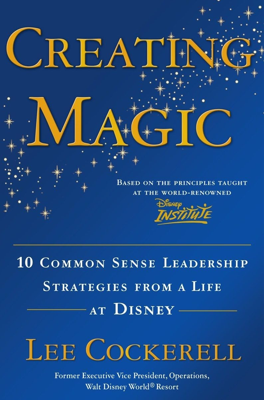Break the Mold
Strategy #2: Break the Mold
Structural Changes for Creative Freedom: At Disneyland Paris, the restructuring of management positions directly influenced the success of its dining quality. By removing the traditional layer of food and beverage directors and having chefs report directly to the general managers, culinary staff were empowered with the autonomy necessary for creativity. This unconventional structural change within the hospitality industry significantly attracted top-tier talent and enhanced the dining experience, aligning it with the standards of fine Parisian restaurants.
Importance of Organizational Structure: Organizational structure plays a critical role in maximizing employee potential and creating a competitive advantage. Effective structures ensure clarity in roles, enhance decision-making, and foster innovation. Lee Cockerell emphasizes that leaders need not only hire and inspire talented employees but also must create the right framework to allow them to excel.
Comprehensive Structural Revision at Walt Disney World: Substantial changes were initiated at Walt Disney World to improve operations by merging the Parks and Resorts divisions. This integration helped in eliminating duplication, sharing best practices, and maximizing resources. The merger facilitated career development, improved service delivery during peak periods, and created a more unified team. Additionally, it enabled cost savings by centralizing functions like purchasing, leading to significant financial benefits.
Operational and Support Consolidation: Further consolidation involved integrating operational and support functions under a single leadership to streamline processes and reduce bureaucratic delays. This change permitted quicker adjustments to operations and improved overall efficiency, which was particularly crucial during emergency situations like the 9/11 attacks.
Leadership and Structural Flexibility: Leaders are encouraged to continually evaluate and adapt organizational structures to meet changing needs. Flexibility in structure allows for rapid adaptation to external events and internal business shifts. Cockerell shares an analogy of adopting change using an example of Green Tabasco sauce, showing how initial resistance can turn into acceptance and success with persistence and openness to new ideas.
Practical Strategies for Structural Improvement: 1. Clarify responsibilities and align them with the right level of authority. 2. Ensure each role in the organization is essential and meaningful. 3. Streamline organizational layers to improve communication and decision-making. 4. Be responsive to the needs of overworked employees by possibly adding support roles. 5. Continuously assess and adapt the meeting structures to ensure productivity. 6. Remain open to suggestions from all organizational levels for potential improvements. 7. Manage change with courage, expecting and respecting resistance but staying committed to constructive transformation.
Continuous Re-evaluation and Adaptation: Regular assessment and willingness to alter organizational structures as needed are vital for sustaining effectiveness. The ability to adapt quickly and effectively to change not only addresses immediate challenges but also positions the organization for future success by keeping it responsive and agile.
